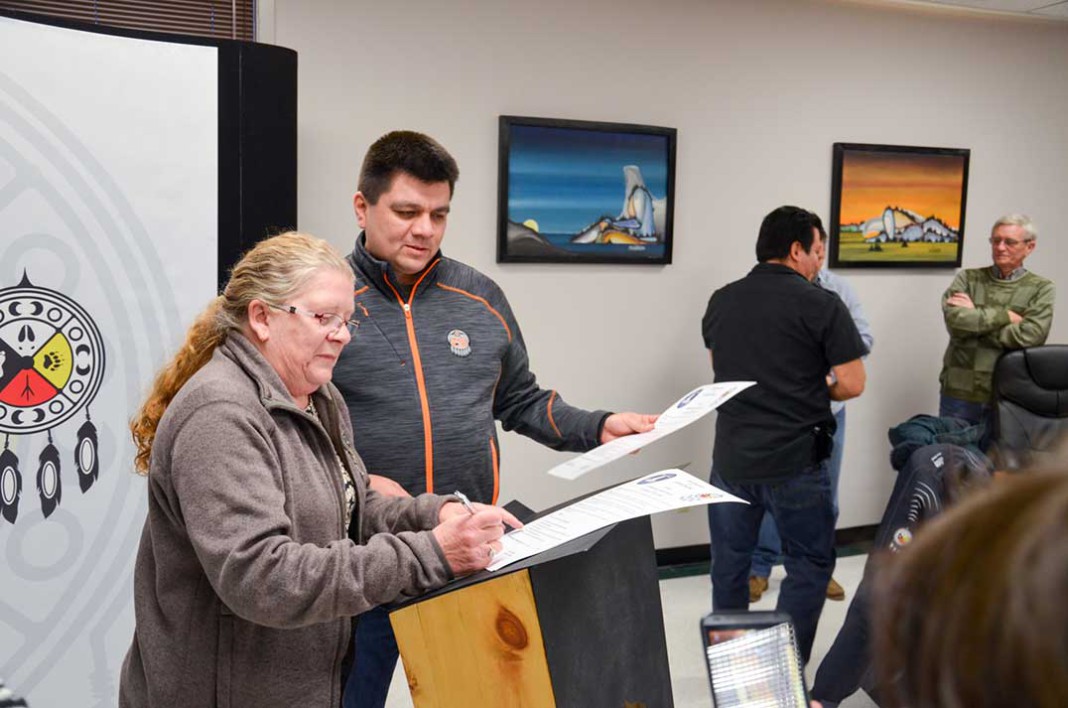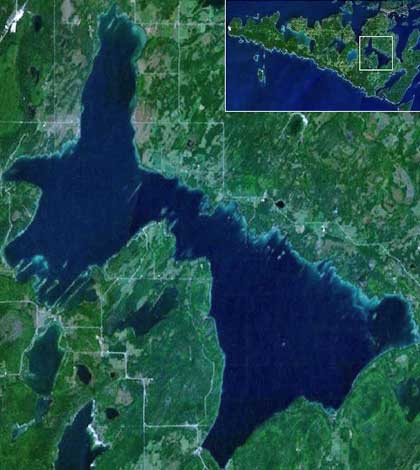WIKWEMIKONG—The mayor and council of the Municipality of Killarney joined the chief and council of Wikwemikong Unceded Territory in the band’s council chambers for the signing of an historic memorandum of understanding (MOU) between their two communities that outlines intentions to cooperate on the development of economic tourism opportunities in the region.
The MOU grew out of the mutual interests of the two communities in the wake of the Island Specific Claim negotiations between Wikwemikong, Canada and Ontario.
The MOU came about due to the facts that Wikwemikong is negotiating a settlement package that includes the return of certain islands and lands and an exchange of patented lands in the Killarney area and recognizes the “need to engage in an information-sharing and discussion process to address concerns of the residents of both communities regarding the Island Specific Claim” and both the First Nation’s and the municipality’s “wish to strengthen and build on the partnership of the people based on historical and familial ties,” according to the preamble of the MOU.
To that effect, the purpose of the MOU is to: improve cooperation and communication between the parties; build partnership relationships; engage in discussions on a bi-annual basis to address concerns of the claim and any other items of mutual interest; investigate collaboration research, public education and funding opportunities to promote the history of the Killarney and islands area and investigate the potential for joint initiatives that will benefit both parties. The MOU was signed on behalf of Wikwemikong by Ogimaa (chief) Duke Peltier and Killarney Mayor Ginny Rook.
Following a roundtable of introductions between the two groups, Chief Peltier welcomed the Killarney contingent to the Wikwemikong territory and described his community for the Killarney contingent.
Chief Peltier pointed out that Wikwemikong has 8,052 members, some 3,500 of whom live in the communities on the reserve, making the First Nation one of the largest in the province. Wikwemikong Unceded Indian Reserve (a name used less and less these days, but still the official title of the reserve) also contains the largest land base of any First Nation in Canada. “With the lands being returned to us, our land base is only going to grow,” he said.
“I think this is wonderful. I am thrilled,” said Mayor Rook before the ceremony. Mayor Rook and all but one of her council members were at the ceremony. “We have a wonderful opportunity here to work together to the benefit of both of our communities. I think we are setting a really great precedent.”
Mayor Rook went on to note that “everybody I have met here has been welcoming and friendly.” The mayor joked that she is looking forward to a tour of the community with the chief “on a warmer day.”
Following the opening remarks, the two leaders exchanged gifts to their communities and councillors. In addition to the usual flags, pins and mugs that are ubiquitous gifts at such ceremonies between communities, Mayor Rook was presented with a handmade quilt bearing the symbolic figures of a star and an eagle. Chief Peltier also presented each visitor with a book outlining the many plants to be found within the Wikwemikong territories.
The attendees were treated to a fish dinner complete with a mixed berry dessert before members of the Wikwemikong staff and council and local agencies, such as the Wikwemikong Heritage Organization and the Wikwemikong Development Commission, presented an executive summary of the work and projects the band has, and is, undertaking.




